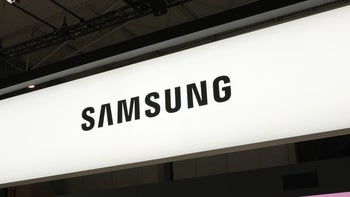TSMC, Samsung to spend a fortune to make sure that this "law" isn't repealed

The top two foundries on the planet belong to Taiwan Semiconductor Manufacturing Company (TSMC) and Samsung. Both are in a race to keep Moore's Law alive; this is the observation made by Intel co-founder Gordon Moore in 1965 that the number of transistors inside an integrated circuit doubles every year. In 1975, he revised his observation and said that the number of transistors doubles every other year. This is important because the more transistors that fit inside a chip, the more powerful and energy-efficient it is.
We can determine if this law is being upheld by looking at the manufacturing process used on each chip. For example, the Snapdragon 845 Mobile Platform was produced by Samsung in 2018 using its 10nm process. The Snapdragon 855 was produced by TSMC this year using its 7nm process and it seems as though next year's Snapdragon 865 will be produced by TSMC once again using the 7nm process (more on this later). Halfway through 2020 and for the balance of the year, Samsung and TSMC are expected to start delivering 5nm chips. The latter will deliver the 5nm Apple A14 Bionic and the Huawei Kirin 1020. At 5nm, an integrated circuit could contain as many as 171.3 million transistors per square millimeter. Consider that the 7nm Kirin 990 5G SoC sports 10.3 billion transistors and you can imagine how complex chipsets are be to make.
Both TSMC and Samsung are spending huge sums of money on EUV
Both TSMC and Samsung have roadmaps to 3nm and beyond and those that scoffed a few years ago at the idea that Moore's Law would still rule in 2020 are stunned. Plenty of money is being spent by TSMC and Samsung in order to reduce the process size for the foreseeable future. According to Techspot, Samsung plans on spending $116 billion over the next 10 years for the technological know-how and the facilities it needs to keep building more powerful chips. The report notes that much of the money is going to refine the development of extreme ultraviolet lithography (EUV). This technology uses ultraviolet light to more precisely place patterns on wafers to mark up where transistors go inside an integrated circuit. Using EUV will increase the density rate of a chip; again, this makes them more powerful and energy-efficient. One EUV machine costs Sammy as much as $172 million. TSMC is also spending a fortune, believed to be as much as $14 billion a year, to keep Moore's Law from being "repealed."

An EUV machine like the ones being used by Samsung
Keep in mind that this battle between TSMC and Samsung is over the production of chips for big-name clients that design their own components but don't have the production facilities or know-how to manufacture them. For example, TSMC counts Apple, HiSilicon (Huawei), and Qualcomm among its big-name customers. This is the type of business that Samsung hopes to grow through the use of EUV and smaller process nodes. For example, Samsung's vice president of foundry business Yoon Jong Shik said, "companies like Amazon, Google, and Alibaba, which lack experience in silicon design, are seeking to make chips with their own concept ideas in order to boost their services. I think this would bring a significant breakthrough for our non-memory chip business." But Samsung is also aiming to churn out chips that TSMC might not have the capacity to make such as Qualcomm's 5G modem chips and AI chips for smartphone manufacturers and other companies.
It is interesting that while Samsung was supposed to manufacture the Snapdragon 865 Mobile Platform and the Snapdragon 765/765G for Qualcomm, it now appears as though Qualcomm will turn to TSMC to produce its 2020 flagship chipset. While the Snapdragon 765/765G chips are still thought to be coming from Samsung, Qualcomm is reportedly concerned about Samsung stealing its designs for use with its own Exynos chipsets.
Samsung currently owns 17.8% of the foundry business which is good enough for second place behind TSMC's massive 52.7% slice of the chip-making pie.










Things that are NOT allowed: